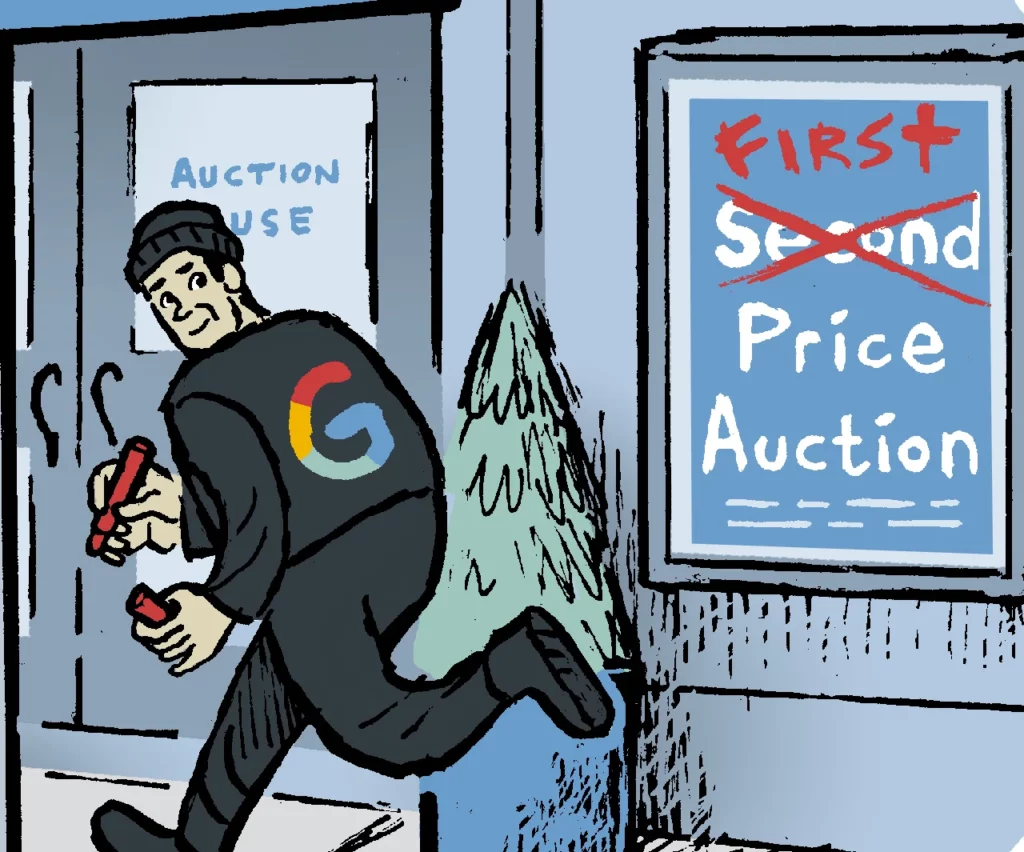What’s causing PubMatic’s $5 million revenue drop in 2024?
In its Q2 earnings report in August, the SSP scaled down its revenue prediction for the year, citing deficiencies from an undisclosed DSP partner’s transition to first-price auctions in May.
A PubMatic spokeswoman confirmed to AdExchanger that the unknown DSP was Google DV 360.
Until earlier this year, DV360 had a bidding logic that upped its bid somewhat when an SSP marked their bid requests as second-price auctions, according to two SSP sources who talked with AdExchanger but asked to remain anonymous. PubMatic won additional auctions from the DSP by marking them as second-price to DV360, according to the sources.
READ MORE: Roblox Partners With Ad Tech Provider PubMatic To Enhance Video Ad Revenue
Google acknowledged that DV360 altered its prediction and bidding mechanism earlier this year, with the change affecting all SSPs. The puzzle is why one SSP, PubMatic, will lose $5 million this year due to the move.

According to a Google spokesman, its DSP performs both first- and second-price auctions and relies on SSPs to accurately signal which auction to run.
“DV360 participates in both first- and second-price auctions, and the SSP chooses which type of auction to run,” a Google spokeswoman told AdExchanger. “We always recommend exchange partners send requested OpenRTB signals for every impression to help DV360 accurately assess and optimize bidding for available inventory.”
However, if DV360 accepts bids from both first-price accounts and second-price auctions, it appears to contradict PubMatic’s claim in its results call that it lost revenue due to a DSP partner forcing a switch to first-price auctions.
Furthermore, most SSPs, including PubMatic, claimed to have migrated to first-price auctions many years ago. In a blog post from 2018, PubMatic CRO Kyle Dozeman stated that the SSP “now runs first-price programmatic auctions on all multi-level inventory (i.e., header bidding).” All major SSPs, including Google Ad Manager, have been conducting first-price auctions since 2019.

It’s evident that PubMatic was still conducting second-price auctions long after the industry was supposed to have switched to a first-price auction model. But how can a modification in this structure result in a $5 million income shortfall?
Prior to May, PubMatic identified their bid requests to DV360 as second-price auctions. Other SSPs most likely employed a first-price auction flag.
DSPs utilize a different bidding logic for second-price auctions than for first-price auctions. In second-price auctions, bidders typically bid higher because the clearing price is lower, only a penny higher than the next offer. This dynamic could explain why PubMatic was able to win more impressions (and possibly at higher prices) by employing the second-price auction flag.

However, removing that advantage would reduce PubMatic’s win rate. And the $5 million would be transferred to other exchanges.
“Marketer budgets don’t just fly out the window because you change your auction type,” said one SSP insider who requested anonymity. “So, where has the $5 million gone? It did not quit the market. It has just been redistributed to the competition.
The SSP source also stated that their SSP experienced an increase in revenue in May after DV360 applied the change required to stop honoring second-price bid requests.
Even experienced ad tech experts were surprised by PubMatic’s use of second-price auctions seven years after the industry transitioned to transparent first-price auctions en masse in 2017.
So, despite the dominant myth, it appears that second-hand auctions are not wholly obsolete.
Radiant TV, offering to elevate your entertainment game! Movies, TV series, exclusive interviews, music, and more—download now on various devices, including iPhones, Androids, smart TVs, Apple TV, Fire Stick, and more.


